Next Generation of Hudson River Educators 2022
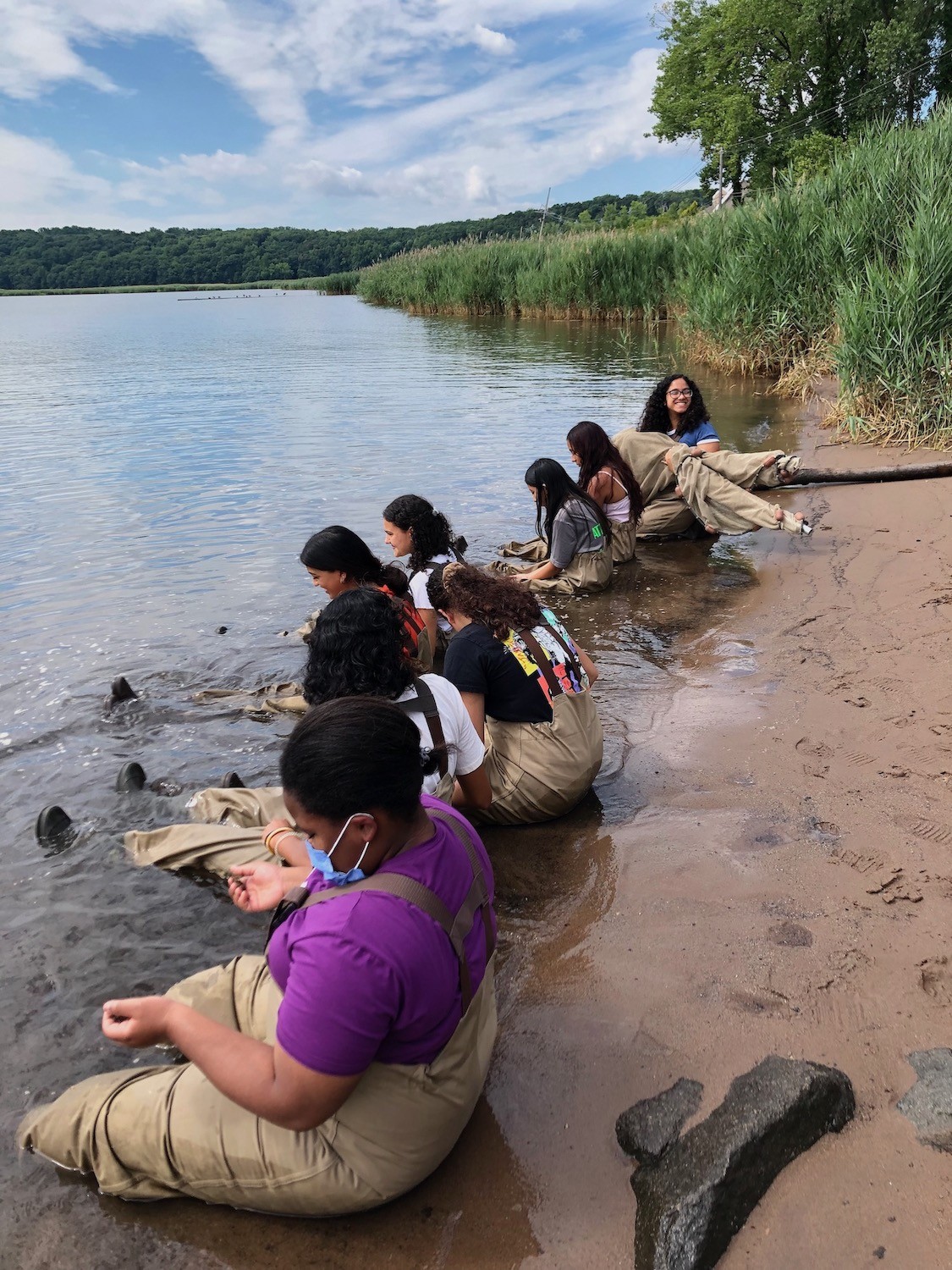
Lamont-Doherty Earth Observatory’s Next Generation of Hudson River Educators Internship (Next Gen) is focused on fostering students' connection with the Hudson River Estuary through hands-on field experiences. Utilizing their newfound knowledge of the Hudson Estuary the students sought to understand how the diverse cultural communities of Rockland County are connected to the Hudson. By collecting community perspectives on the Hudson, the students empowered the diverse cultural communities of Rockland to share their current and historical connection to the Hudson.
One of the central tenets of Next Gen is the focus on two way communication. This includes not only reaching out to community members to listen to their perspectives, but also working in different communities sharing our findings and observations and learning from them. Too often this circling back to the community is overlooked. In summer 2022 we launched into a new phase of the Next Gen program called ‘A Voice of Unity’!
2022 Focus is ‘A Voice of Unity’
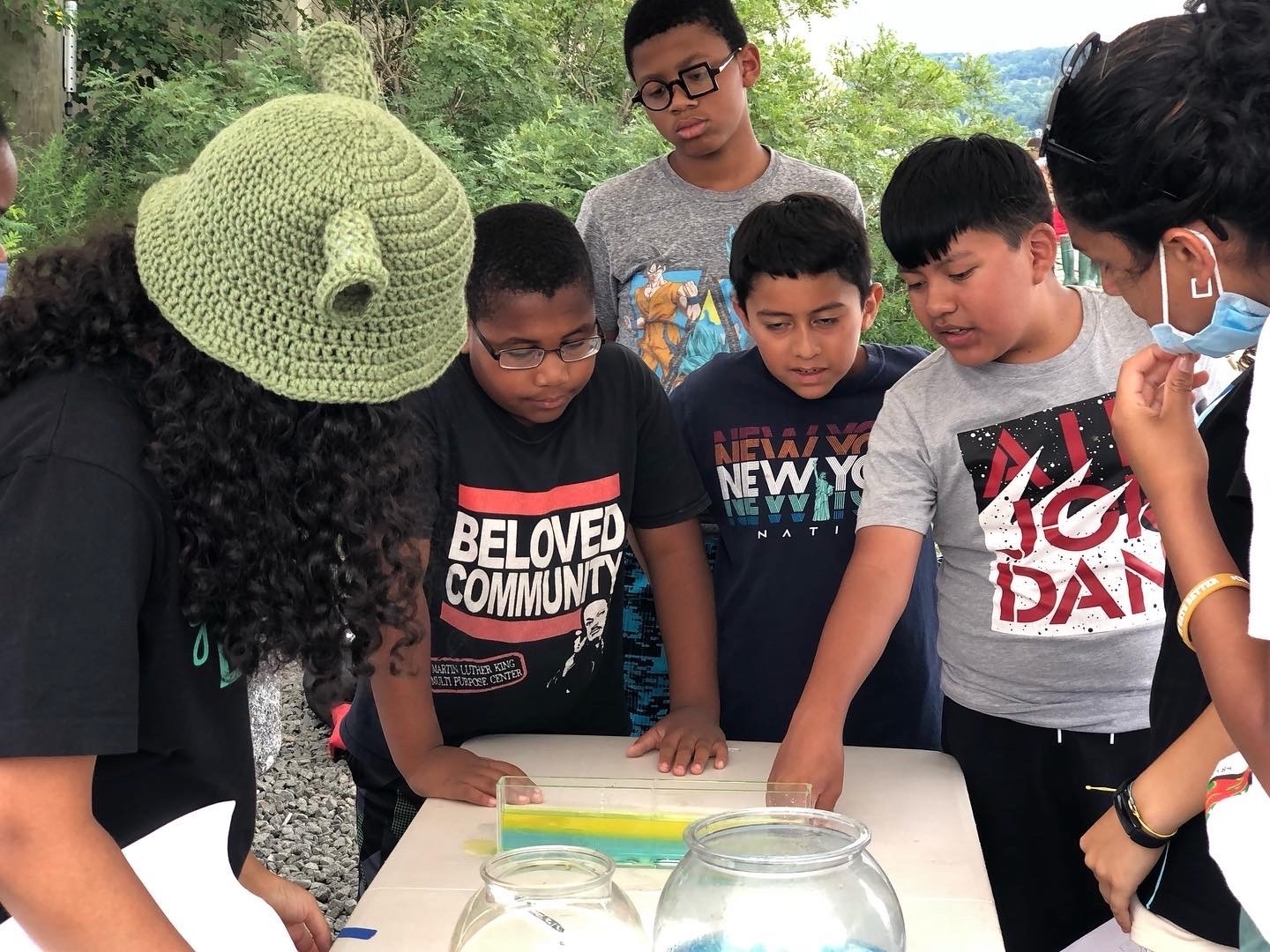
A Voice of Unity is an extension of the Next Gen program that has a goal of bringing together the different voices of Rockland County by sharing the diverse stories, perspectives, and experiences that residents have had with the Hudson while building their knowledge. The Next Gen students focused on visiting and engaging with community members and youth in Spring Valley and Haverstraw. Through collaborations with the Haverstraw Community Center and the Martin Luther King Center in Spring Valley, the students were able to foster an understanding of the cultures and communities within Spring Valley and Haverstraw and collect community perspectives on the Hudson through a series of interviews.
Haverstraw Community Center
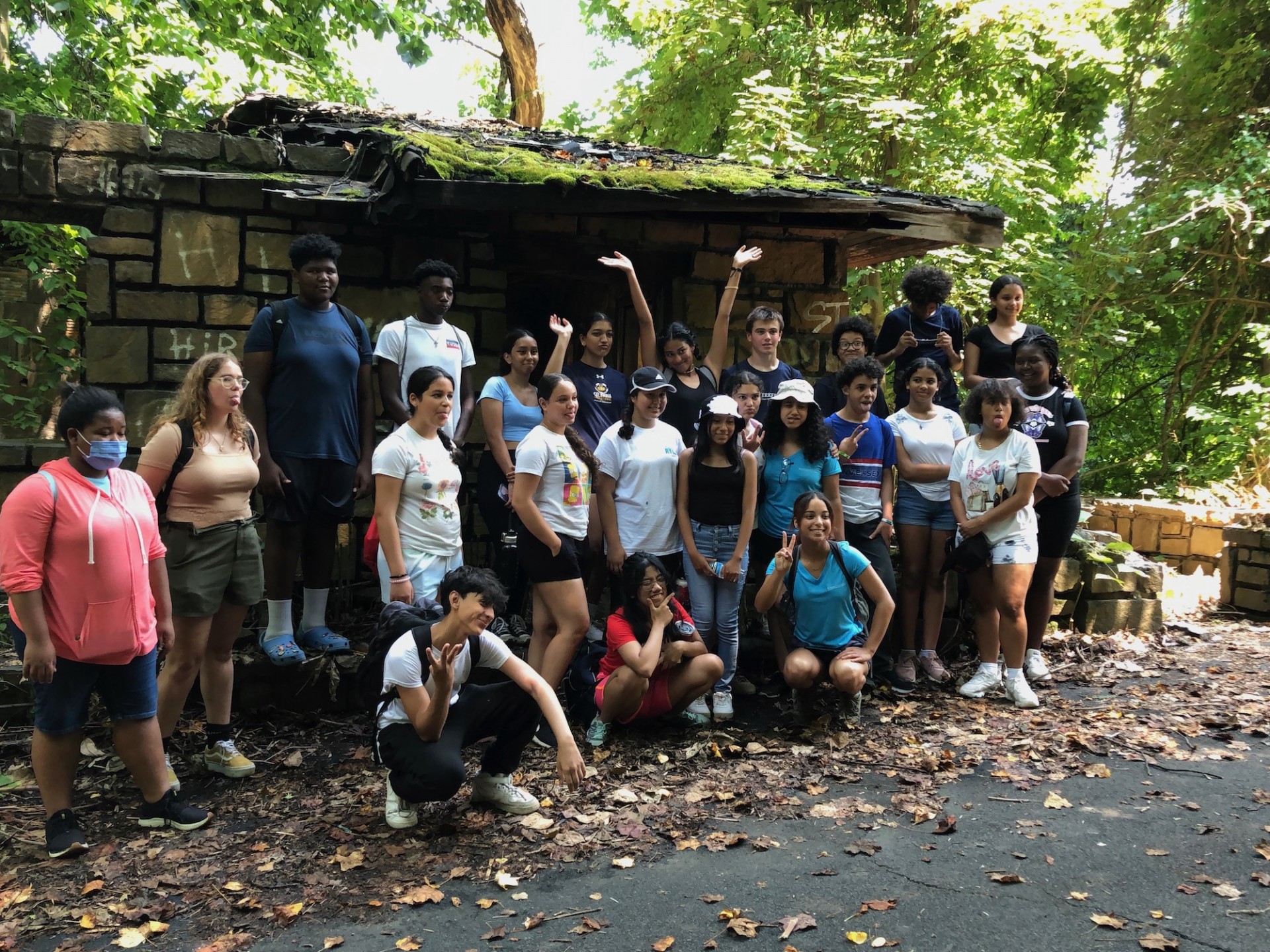
The Next Gen students formed personal relationships with fellow high school students while collaborating with the Haverstraw Community Center. To familiarize themselves with Haverstraw’s history, the Next Gen students and the Haverstraw youth hiked through Dutchtown Park where they got to visit the site where the American General, Benedict Arnold, defected to the British during the Revolutionary War. The looked at invasive plants in the park and together learned to identify wineberries and other species. The Next Gen students worked with their high school peers to share information about the Hudson Estuary and the species that can be found in Haverstraw, seining off the beach at Emeline Park. The next visit brough the Next Gen students to the Haverstraw Community Center to play some Hudson River themed games. While at the center, the students conducted a series of interviews to gain perspective on how their peers in Haverstraw viewed and were connected to the Hudson. Finally, the Haverstraw Community youth visited the Hudson River Field Station in Piermont where both groups conducted water chemistry tests, measure tides and turbidity, and seined to compare catches between Haverstraw and Piermont.
Martin Luther King Center
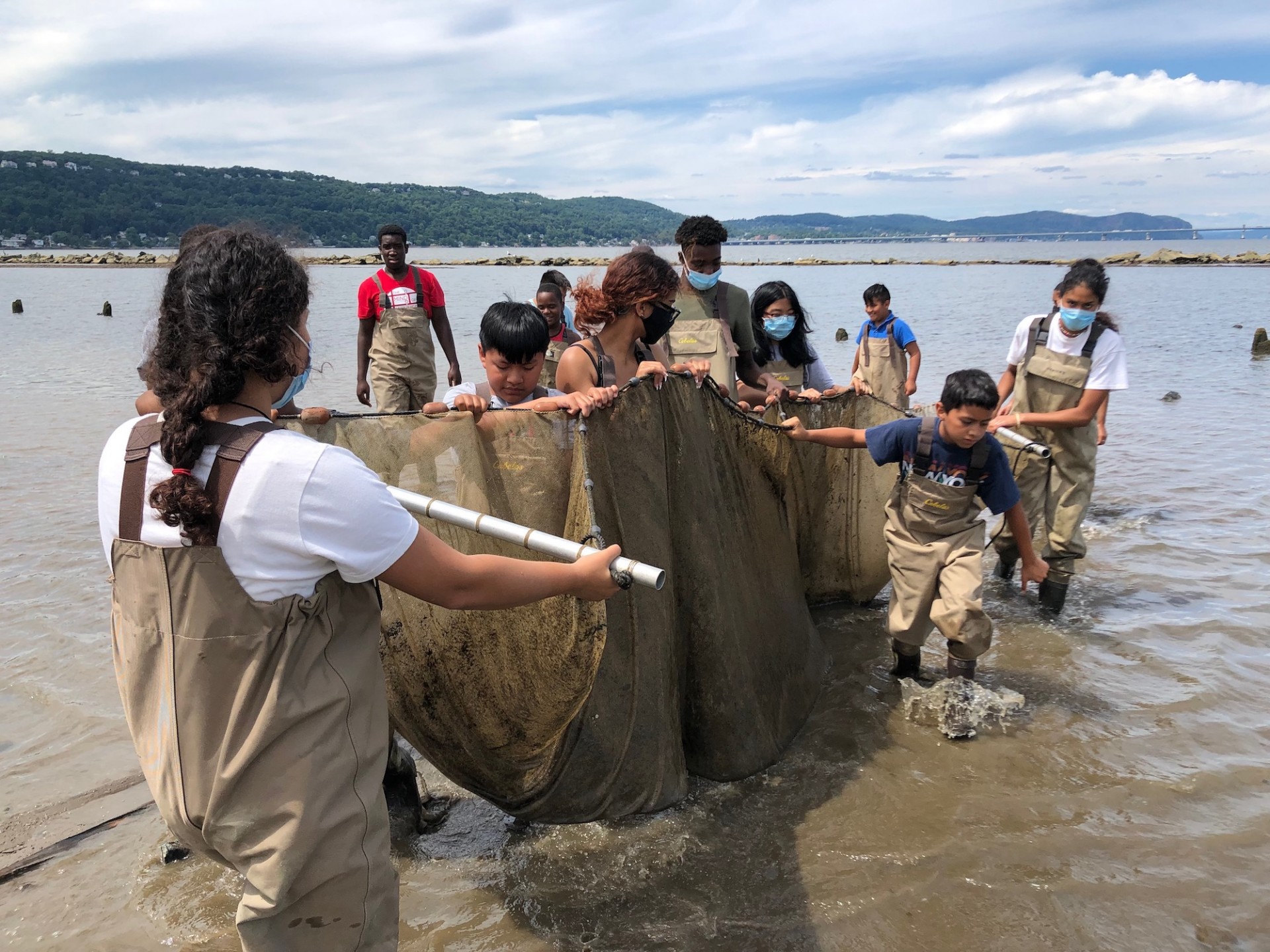
The Next Gen students got a chance to practice their educator skills and become mentors while working with middle school students at the Martin Luther King Center. They had a blast going on an ecology scavenger hunt with the MLK Center students in Kathryn Gorman Ponds Park. Using the SEEK app, they were able to find and identify native and invasive species in the park while searching for different features on the scavenger hunt. The Next Gen students visited the Martin Luther King Center to play Hudson River themed games with the students. Survival of the Herring, a board game where you play as different herring found in the Hudson, was a huge hit with the students and taught them about some of the challenges these species face. Other fun Hudson-themed games the students played included Eels & Ladders, a twist on chutes and ladders, and Invasive Species Battleship! While at the center, the students collected interviews from the MLK students and counselors to understand how members of Spring Valley are connected to the Hudson. The MLK Center then visited the Hudson River Field Station in Piermont where the Next Gen students taught them how to seine and identify fish, how to conduct water chemistry tests, and how to measure tides and turbidity.
CUNY STEM Summer Program
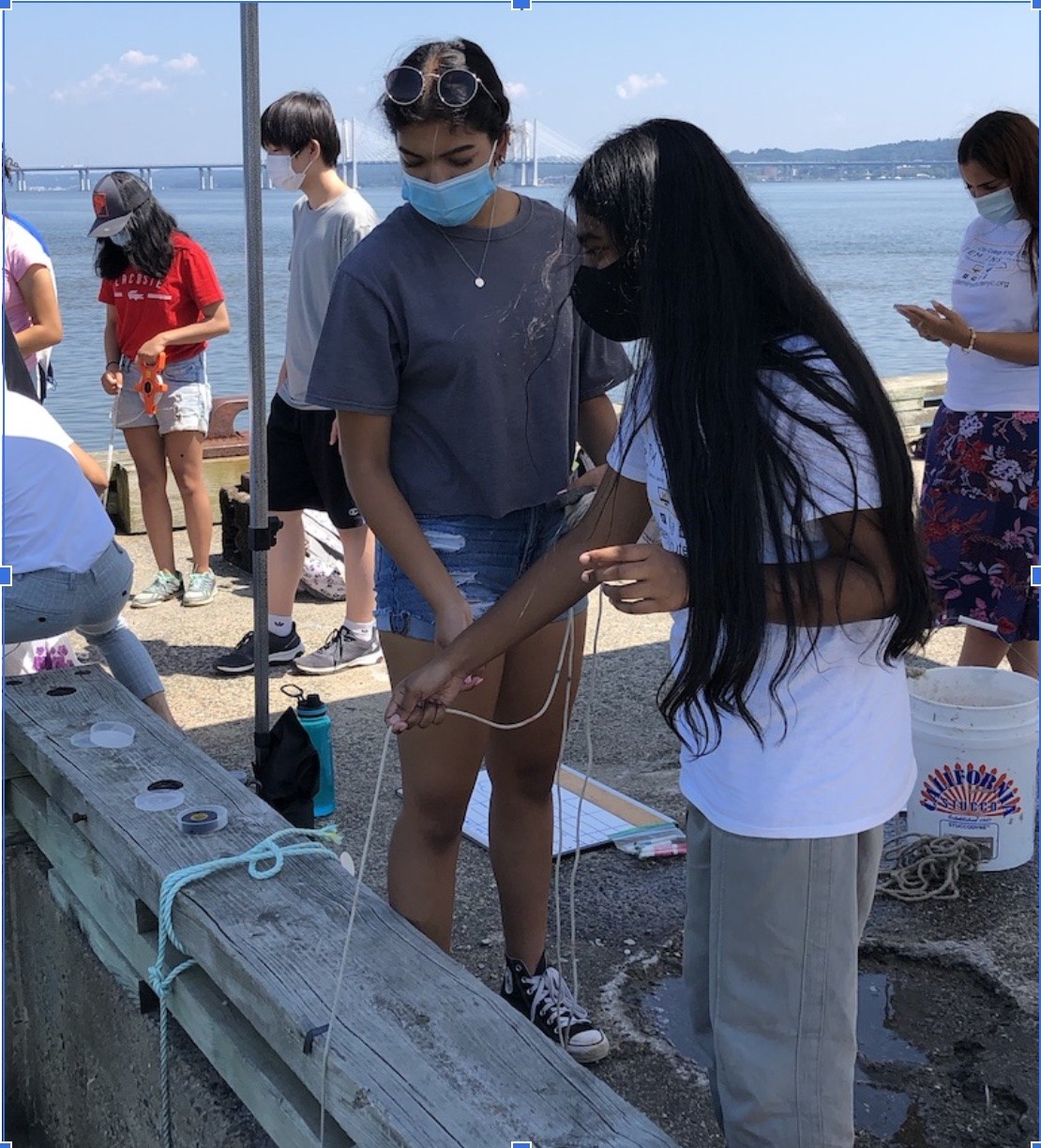
The Next Gen students got to practice their educator skills when a CUNY STEM summer program came to visit the Hudson River Field Station to learn more about the Hudson River Estuary. At the water chemistry station, the students taught the CUNY STEM members how to measure turbidity, salinity, temperature, and dissolved oxygen. They spearheaded discussions on how these parameters impact the species of fish and macroinvertebrates that are present in Piermont and how these parameters change seasonally, The Next Gen students outfitted the CUNY STEM members in waders and took them out into the Hudson to go seining. The students got a glimpse of what species could be found in Piermont. After their visit to the Field Station, the Next Gen students created a ppt with embedded videos describing the species that the CUNY STEM members caught while seining to give them further information about the unique species found in the estuary.
Hudson River Sampling and Research
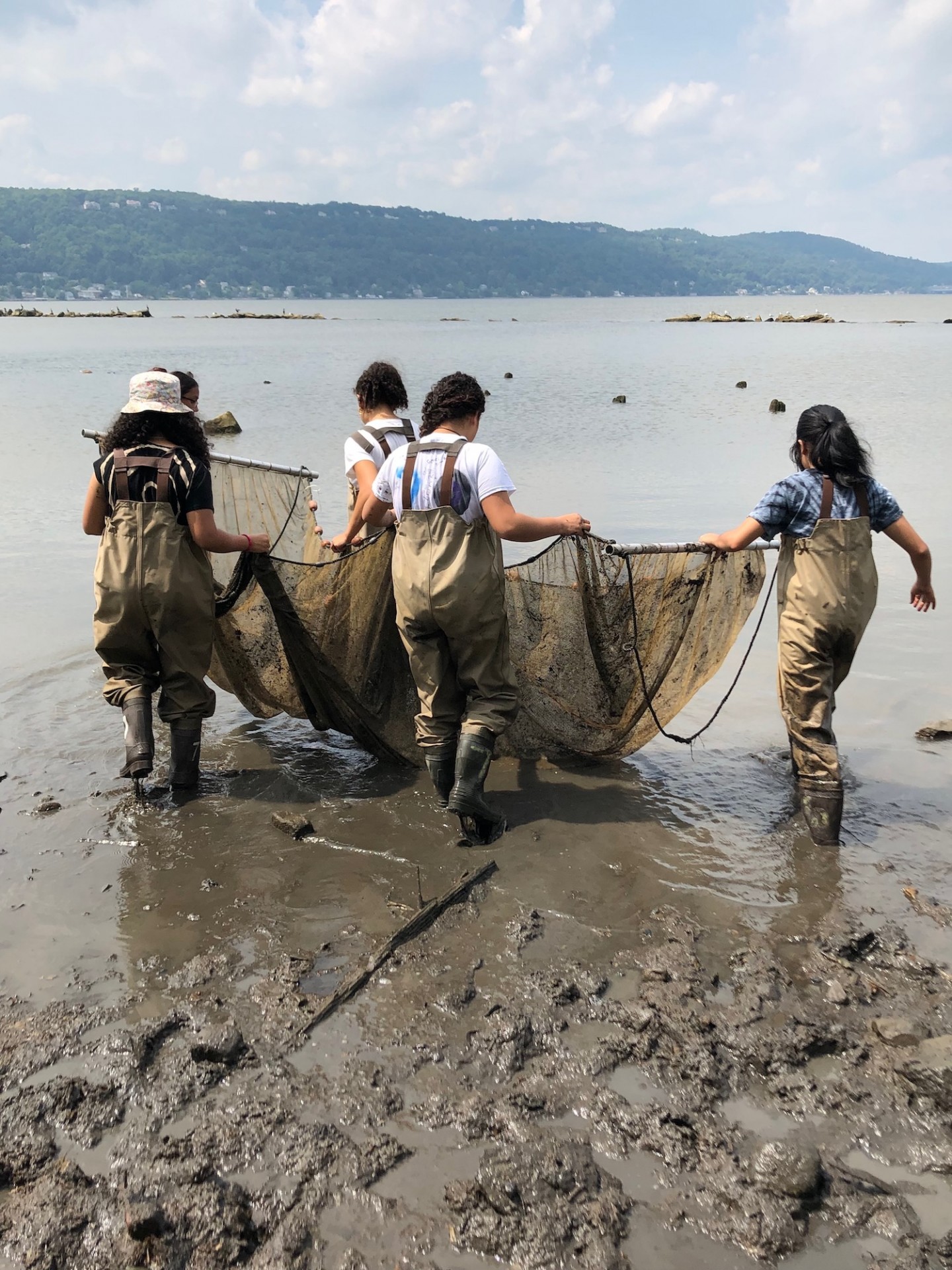
While immersed in the program the Next Gen students contributed to the standing research being conducted at the Field Station. Their weekly biodiversity and water parameter sampling increased understanding of which species are present in Piermont throughout the summer and how changes to salinity, water temperature, and dissolved oxygen impacts the seasonality of these species. Additionally, the Next Gen students helped to monitor eastern oyster cages deployed off the end of the pier and helped sample the Hudson to determine presence and prevalence of microplastics.
Fish ID and Water Chemistry
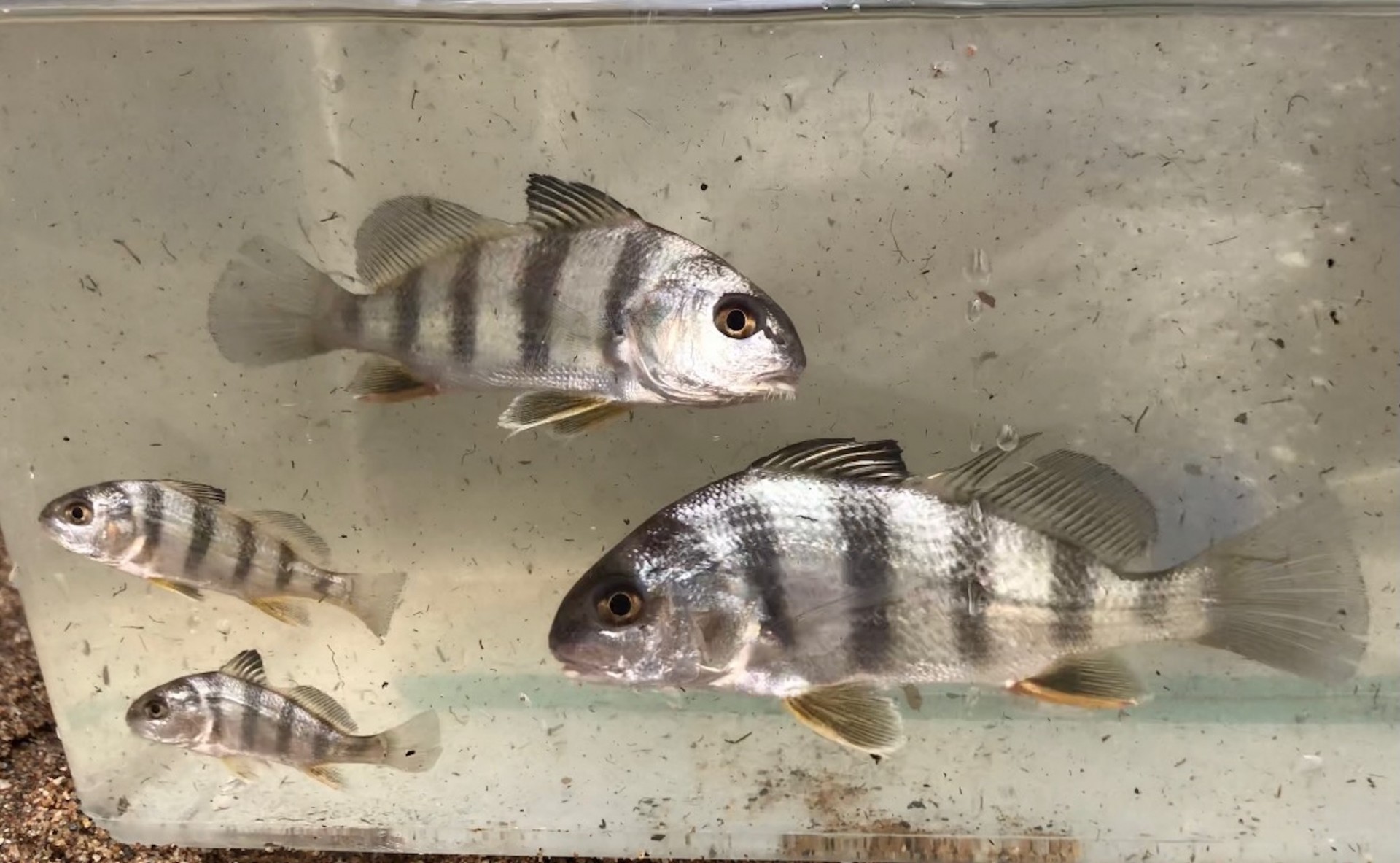
The Field Station’s location adjacent to Piermont Marsh makes it a remarkable place to study the biodiversity of the Hudson Estuary. The dynamic nature of the estuary means that different species can be found in Piermont based on the season and physical conditions. While seining, the students recorded the biodiversity and abundance of species caught throughout the summer in Piermont. They were on the lookout for invasive species such as the round goby that are beginning to be found in the estuary. Additionally, the students looked at a variety of water parameters such as salinity, water temperature, dissolved oxygen, alkalinity, etc. to understand how the changes in these parameters correlate with the presence of certain species in Piermont throughout the summer. While experiencing higher than normal salinity in Piermont during a drought, the students pulled in four black drums, a species that prefers higher salinity than normally measured in Piermont! By measuring the salinity in Piermont, the students were able to understand why the black drums had moved into the water by Piermont, a place where we have rarely netted them.
Oysters!
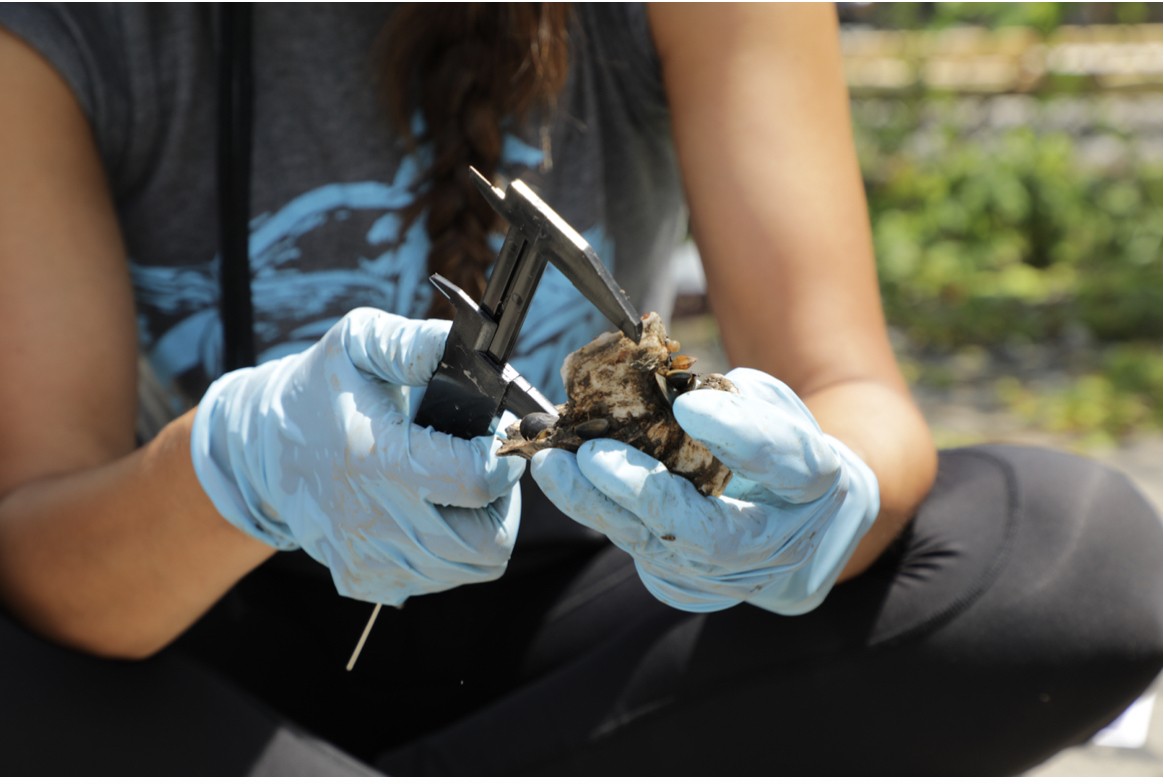
In partnership with the Billion Oyster Project, the Hudson River Field Station has 4 oyster cages deployed off the end of the pier to help restore Eastern Oyster populations in the area. Students helped to monitor the health of these oysters and gain understanding of whether the environmental conditions in Piermont were optimal for their health and reproduction. Oyster monitoring involved the students measuring the size of the oysters in the cages, determining if they were alive/dead, and identifying any macroinvertebrates or fish that were found in the oyster cages. Some cool finds in the oyster cages included blue crabs, Harris mud crabs, gobies, and blood worms. The abundance of macroinvertebrates and fish found in the oyster cages demonstrates the vital role eastern oysters play in the Hudson as a keystone species.
Microplastics
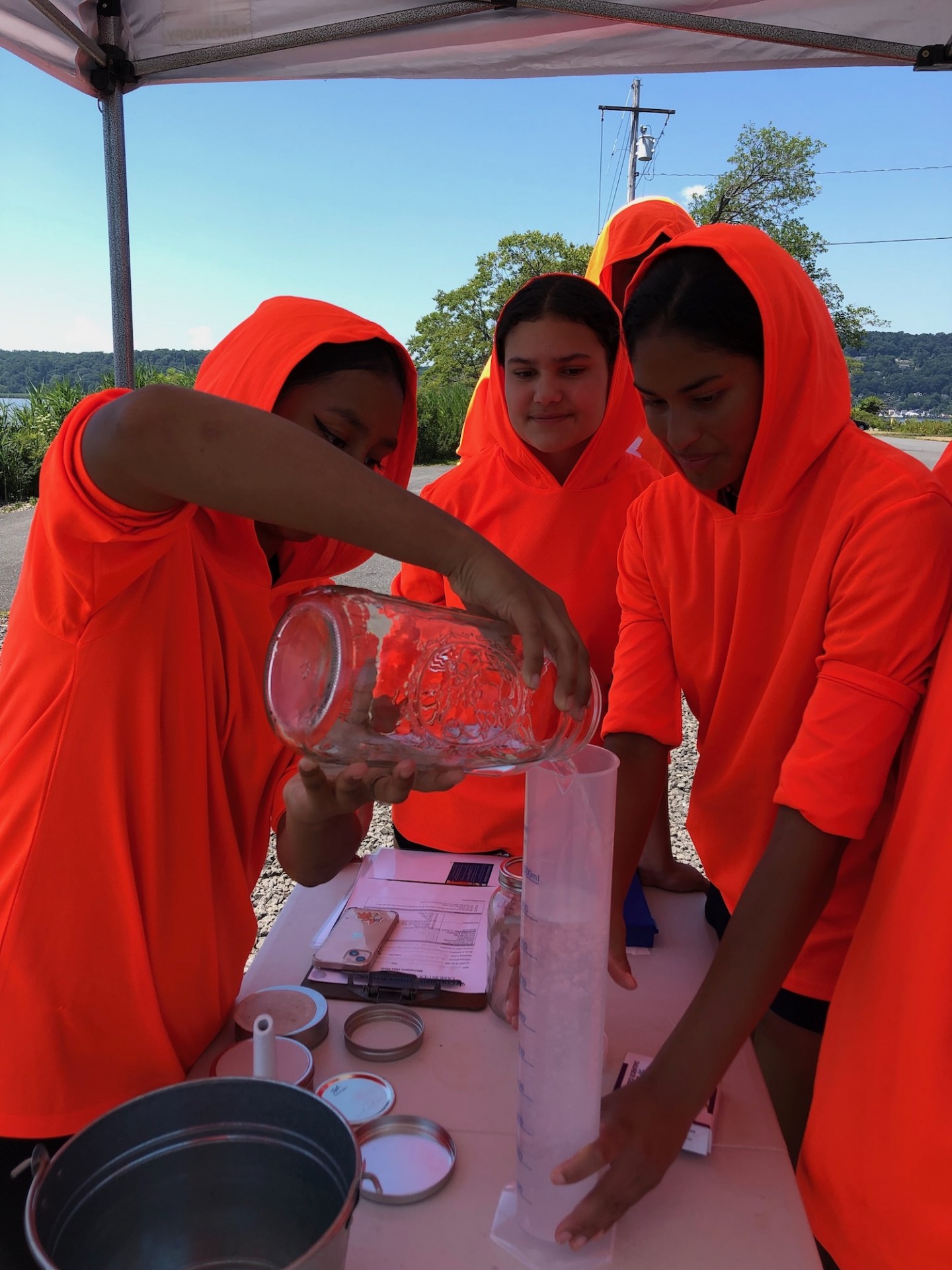
A startling new understanding of how plastics break down has uncovered a troubling reality of the prevalence of microplastics all around us. Mistakenly eaten by fish, microplastics work their way up through the food chain impacting aquatic birds, mammals, and ultimately humans. Microplastics have been documented absorbing toxins and pollutants and subsequently increasing exposure throughout the food web to toxins, such as Polychlorinated Biphenyls (PCBs). Additionally, microplastics are full of chemical additives that break down and can expose populations to further harmful toxins. The Next Gen students sought to understand exactly how prevalent microplastics are in the Hudson River. Outfitted in orange shirts, to help them recognize contamination of samples, the students collected 1 liter of Hudson River water off the pier in Piermont. They filtered the water and analyzed the samples under ultraviolet light, which makes the microplastics fluoresce. The students quickly discovered that microplastics are present in the Hudson River. Some samples analyzed had 5+ microplastics in just 1 liter of water!
A Glimpse into the Microscopic World of the Hudson

Despite being small in size, plankton play a vital role in the Hudson River Estuary food web. Phytoplankton are the primary producers in the Hudson, converting light energy into carbon sources that can be used by other organisms. Zooplankton, through feeding on phytoplankton, play a crucial role in linking the primary producers to the rest of the food web. The importance of these microscopic organisms is unequivocal but little is known or understood about plankton in brackish areas of the Hudson River Estuary. The Next Gen students helped to increase understanding of which species are present in Piermont during the summer months. Utilizing a plankton pump, the students collected water samples teeming with planktonic life. By placing these water samples underneath microscopes, the students got a glimpse into the microscopic world of the Hudson which is normally hidden from view. Copepods were a crowd favorite as students enjoyed watching them zip around their petri dishes. Overall, the students’ help in identifying and documenting which plankton species were present in the samples has created a baseline understanding of which species can be expected to be found in future summer samples in Piermont.
Conclusion
Summer 2022 was just the beginning of working more closely with local communuty groups. we hope to bring together this work in a short video in the next year.
